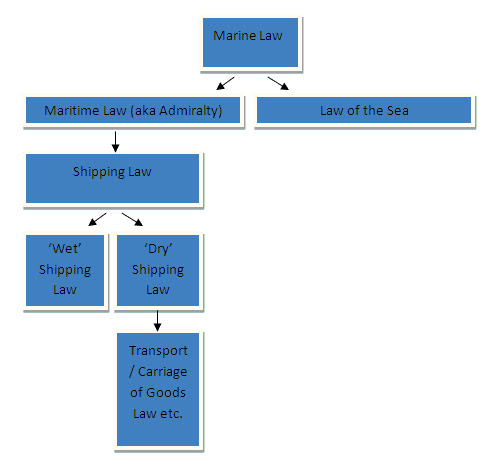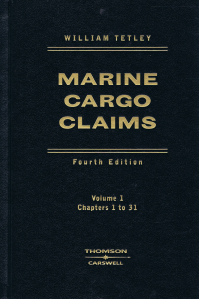February 23, 2011
This is a collection of terms that I have built up after being asked by someone what something means or which I have heard people appear to misunderstand. I have endeavoured to explain each in simple terms.For my list of general terms please see my
Glossary.
AB – Able-Bodied Seaman. A general crewmember onboard a vessel, in good health and with a general knowledge of working onboard a ship.
AIS – Automatic Identification System. This is a modern system for identifying ships and their exact locations / movements. Ships have AIS equipment onbaord which transmits information which gives the ships details and GPS coordinates. This information can be used by VTS operators, ports etc. for day to day interaction with the ship and logged by ship tracking systems (Seaweb, Lloyds MIU etc.) for long term records of a ships movements.
AOV – Any One Vessel.
AUV – Autonomous Underwater Vehicle. This is a subcategory of UUV submersible craft which can function without an operator at all, scanning the seabed using set parameters, for example.
AWIWL – Always Within Institute Warranties Limits.
CBA – Collective Bargaining Agreement. This is a document which acts as an extension to a group of employment contracts, usually for crewmembers onboard vessels. In general an employer who has a certain number of staff will be approached by a representitive of the employees as a group, who will negotiate terms which will be incorporated into all their agreements. It typically acts to fix compensation for injuries or provision of care for employees who fall ill.
C/M – Crewmember. A common industry shorthand.
DO – Diesel Oil. To distinguish from ship’s bunkers.
ETA – Estimates Time of Arrival. Where followed by a location the time estimated to arrive at that location (e.g. ETA Liverpool 14:00 GMT).
ETD – Estimated time of Departure.
FFO – Fixed or Floating Object. This term is used to describe an incident where a ship hits something fixed or floating (but not another vessel, that would be a collision) and causes damage to it; for instance where a ship crushes a wooden pier (fixed) or dents a navigational buoy (floating). You will hear people talk of an ‘FFO claim’ accordingly. Some insurance policies will use the term ‘fixed or moving object’, to encompass claims where a ship damages third party property which is neither fixed nor floating (i.e. a delivery truck ashore).
IRTC – Internationally Recognised Transit Corridor. This is an area which has been marked out in the Gulf, in order to try to prevent Pirate attacks on vessels off the East-Coast of Africa. Discussions narrowed down the most popular route, furtherst from the cost and with least risk of attack and it is now recommended that all vessels use this when navigating the area for safety.
LS – Lump Sum.
MFV – Motor Fishing Vessel. Most ships powered mainly by engine are referred to as ‘MV’ so this is just a more specific title where the vessel is used for fishing.
NLRC – National Labour Relations Commission. The equivelant of an employmetn tribunal in the Philippines
OFC – Office.
OWS – Oily Water Separator. Most commercial ships have bilge wells which collect bilge water; a combination of water drained off from various sources on board which can include water from mechanical leaks and it normally contains oily residues. Bilge water generally needs to be pumped overboard to maintain the ships stability, but in line with international conventions (MARPOL) the oil in the water must be separated before thesis done. This is then normally done by an overboard pipe.
PDPR – Per Dar Pro Rata. This normally appears in charterparty wordings against an amount. ‘USD 1,000 PDPR’ means that if you are referring to 2 hours the relevant amount is USD 83.
POEA – Philippines Overseas Employment Administration. An organisation which represents Filipino crewmembers on foreign vessels. They assist mainly with the creation of collective bargaining agreements and providing standard contract terms for employment.
RDC – Running Down Clause. An old fashioned term for a a collsion with another vessel is ‘running down’, and therefore the clause in a marine insurance policy which relates to collision claims is often called the ‘Running Down Clause’ or ‘RDC’.
ROB – Remaining on Board. Use in vessel shorthand, for instance, ‘bunker spill occurred, ship now grounded and leakage stopped, 10 mt of Bunkers ROB.
PAX – Passenger. A commonly industry shorthand, i.e. ‘hit by rogue wave, some damage to stern windows, no PAX injuries’.
ROV – Remotely Operated Vehicle. This is a description of a category of small machines which are designed to operate underwater without a controller onboard, but being operated by someone onboard a larger vessel on the surface, usually they will use a remote control of some form linked to the unit by electrical cable. It is a subcategory within the UUV group of marine equipment and includes, for instance, robots which can film deep sea wrecks.
SITREP – Situation Report. Shorthand for an update provided on a particular situation.
TTL – Total. Commonly used in fixture notes for charterparties.
TEU – Twenty-foot Equivelant Unit. This is the term for measurement of how many containers a ship can take onboard based on the maximum number of original twenty foot long container units it could carry. Of course sometimes a 40 foot container or other structure may be used in some areas of the ship, so a 10,000 TEU ship may be full laden but carrying a lot less than 10,000 individual containers, so giving the number of TEU it is capable of carrying is a better way of comparing it with other ships. Some people use the words Totally Enclosed Unit instead but it refers to the same thing.
UUV – Unmanned Underwater Vehicle. This is a group of small submerged craft, designed to be operated from a surface vessel, but with with no one actually onboard (not including, for instance, mini-submarines). This group of underwater equipment includes ROVs and AUVs.
VSL – Vessel – A commonly industry shorthand.
VTS – Vessel Traffic Services. This is the term for an organisation which controls vessel traffic in a given area. Usually controlling movement of ships and boats on a busy river or near a port.
WP – Generally this means Without Prejudice, which is a short for of saying without prejudice to our rights or position in law (i.e. if someone accuses you of a wrong against them you may feel that you did not commit it or do not know whether it happened but wish to get rid of the problem by offering them some money but you would do so ‘WP’, i.e. if they didn’t accept it you would not want them showing the offer of money to the judge as proof that you did commit the wrong, the offer would be without prejudice, or damage, to, your rights). However, I have also seen this used in c/p’s to mean ‘Weather Permitting’ (i.e. vessel to begin loading WP, 10/10/2012).
WWWW – This is a term often found in charterparties. It sets out the conditions when a Notice of Readiness can be tendered, to confirm that a vessel has arrived in port for the purposes of commencement of laytime. As an acronym of four separate acronyms it can be quite confusing. It means WIBON (whether in berth or not), WCCON (whether customs cleared or not), WIFPON (whether in free pratique or not) and WIPON (whether in port or not).











